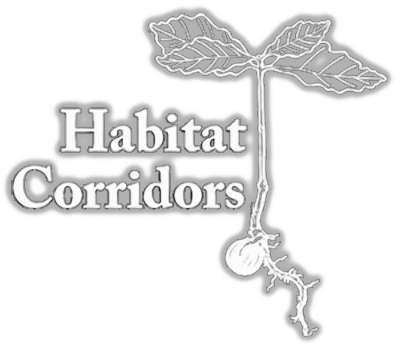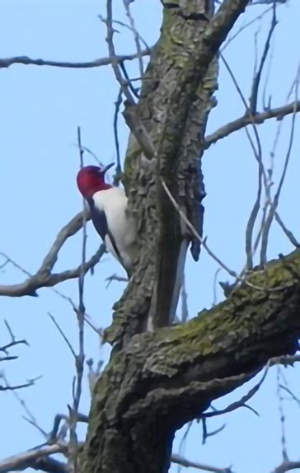Saving living space for living
things one yard at a time
Drop that Saw and Leave the Dead Trees Standing!
We may not always realize that non-living things in our yards can be just as important as living ones. For example, when a tree is dead or dying, our first inclination may be to take it down. If the tree is severely diseased or in an unsafe location, it may be best to have it removed. However, if the tree died from natural causes and is located in a safe place, it can become a wonderful source of backyard habitat.
Dead trees left upright to decompose naturally are called “snags,” and in nature they are used by many resident wildlife species for nesting and perching and as a reliable food source. Snags can harbor a huge variety of small insects, larvae, and spiders as well as create a welcoming environment for moss, ferns, fungi, lichens, and even tree seedlings.
Birds like woodpeckers love decaying trees and will create nest holes in them. When they abandon these cavities, the holes are ready-made nesting sites for other bird species, such as chickadees, titmice, nuthatches, wrens, swallows, bluebirds and even owls. This year a CFC board member had the pleasure of watching red-headed woodpeckers nest in a dead tree in her yard and then experienced the joy of seeing the babies fledge! This is an especially important event since red-headed woodpeckers are becoming quite scarce around here.
Tree cavities provide winter cover from harsh weather along with being protected places to rest and hide from potential predators. During warmer months, many native pollinators including bees and beetles will use dead trees, either standing or fallen, to lay their eggs. Thirty percent of our native bees nest in holes in decaying wood. Large carpenter bees can actually “drill” nest holes directly into wood or use existing natural openings found in decaying trees.
Fallen trees and logs are common components of a healthy ecosystem and eventually create rich, fertile soil. Help your garden by leaving snags standing and fallen logs lying, and then let nature take her course. You will be privileged to observe a wide variety of wildlife using the structures and can observe the creative ways in which they make your backyard habitat their own.

